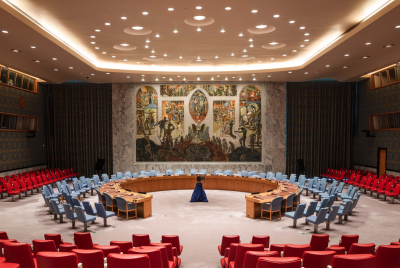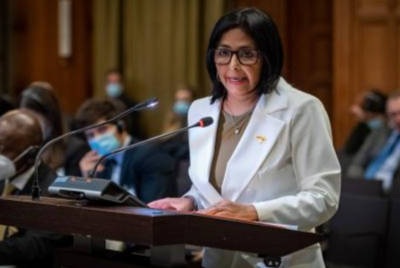Data shows how Trump's speeches are changing as election enters final months
Comparing language used by Clinton and Trump reveals how election pitches are altering.
Donald Trump's speech to a New York economics debating society on Thursday (15 September) sought to dispel criticism that his financial policies, founded on tax cuts and increased spending, don't add up.
Speaking to the Economic Club of New York, a century-old forum for business people, Trump said he could create 25m new jobs with a two-term presidency — exceeding the 21m jobs created during a boom in the 1990s under Bill Clinton.
It was a detailed policy address, but many have characterised Trump's speeches as simplistic. In March, research by linguists at Carnegie Mellon University found his grammar and vocabulary to be that of an 11-year-old, well below his rivals.
But data on language use in eight speeches by Hillary Clinton and Trump collected by IBTimes UK shows the complexity of Trump's speeches increasing in recent months and sometimes exceeding Clinton's, depending on his audience.
Fourteen per cent of the words in Trump's speech to the economic club were complex. Compare that to his speech at Hilton Head, South Carolina, during the primaries in January. Just 6% of it was complex words.
Analysis of the candidates' speeches — from late August, to the Democratic and Republic conventions in July, and stretching back to the state primaries early this year — show the reading levels Trump and Clinton's speeches aim for and the number of complex words they use.
The language of the campaign has ramped up as recent speeches from both candidates have tackled issues like foreign policy, national security, the economy and immigration.
Hours after his controversial visit to Mexico in August, Trump delivered a significant address on immigration in Phoenix, Arizona. Clocking in at 4,000 words, it contained 712 complex words (17% of the total), making it the most substantial of his campaign. From the outset, Trump acknowledges it was "not going to be a normal rally speech," but rather "a detailed policy address". The data shows it was aimed at the reading level of a 17-year-old.

Trump has shifted to a more complex style, including more complex words in his speeches and targeting them at a higher reading level.
Clinton's speech on 'American Exceptionalism' at the American Legion convention in August was also 4,000 words. Of those, 503 (12%) were complex words. Throughout the 2016 leg of the campaign she has consistently delivered speeches aimed at a 14-year-old reading level.
Clinton remains neck and neck with Trump. National polling shows her with 44% and Trump with 42% of the vote. But there are clear differences between the two candidates, and some similarities, when it comes to their use of language. The two are set to meet head-to-head for their first debate September 26.
"The Trump style eschews any kind of rhetorical cleverness," wrote former BBC director general Mark Thompson in The Guardian in August. His "super-short sentences emphasise certainty and determination, but build up layer by layer towards a climax with a kind of emotional logic."
From the speeches sampled, on average, Trump delivers 13 words per sentence, while Clinton delivers 16. However, the simplicity of his sentences depends on who he is addressing. His speech at Hilton Head, South Carolina in January shows him speaking eight words per sentence, on average, compared to a whopping 19 in his recent immigration address.
Trump's ability to vary his speech for his audience is, in essence, him saying the "guarantee that I see the world as you do is the fact that I speak in your language," Thompson wrote. The switch in rhetoric, he argues "is intended to emphasise the break with the despised language of the men and women of the Washington machine".
Comparing the eight speeches, however, Trump used more complex words, on average, than Clinton.
If you thought political speech is becoming more simplistic and targeted at a lower reading age, you would be right.
"The casual is key to communicating effectively in our era," according to John H. McWhorter, an American studies and linguistics professor at Columbia University. "You have to sound like the common man to an extent, or you are a stiff," he said in a 2012 lecture series, finding "there has been a death of oratory in modern American English".
"And if we don't go at Iraq, that our effort in the war on terrorism dwindles down into an intelligence operation. We go at Iraq and it says to countries that support terrorists, there remain six in the world that are as our definition state sponsors of terrorists, you say to those countries: We are serious about terrorism, we're serious about you not supporting terrorism on your own soil."
Consider a quote to the right from Senator Sam Brownback of Kansas as he made his case to invade Iraq on the floor of the American Senate on October 3, 2002.
His remarks are a long way from the eloquent hours-long speech given by orator Edward Evertt before Abraham Lincoln's 1863 Gettysburg Address. But even if you look back to John F. Kennedy and Richard Nixon's Democratic and Republican nomination speeches during the 1960 Presidential campaign, you can see how much has changed in half a century.
Both candidates aimed their nomination speeches at 15 and 16-year-old reading levels. Clinton and Trump's nomination speeches target the reading levels of 11 and 14-year-olds. They also use far fewer words per sentence.
Thompson attributes the decline of political speech to 20th century advertising and the study of scientific ways to persuade people to buy products.
The persuasive language of advertising injected "the brevity, intensity and urgency we associate with the best marketing" into political speech, but stripped it of "traditional step-by-step political argument", he wrote.
In the end, this leads to a "public discourse that is losing its power to explain and reconcile, or indeed to express anything beyond hatred and division".
© Copyright IBTimes 2025. All rights reserved.






















